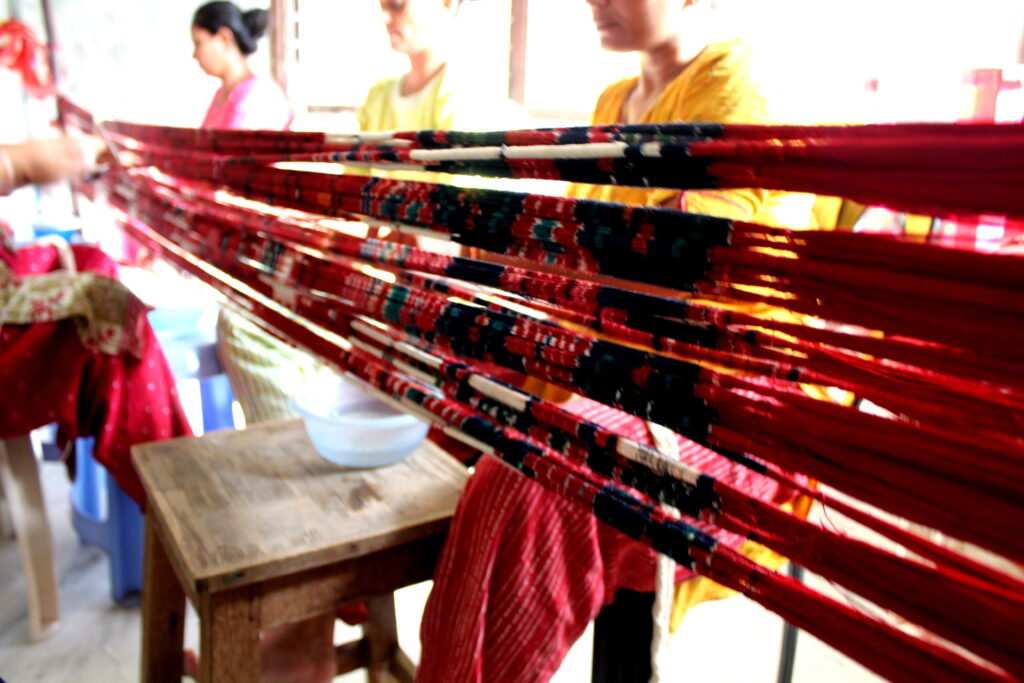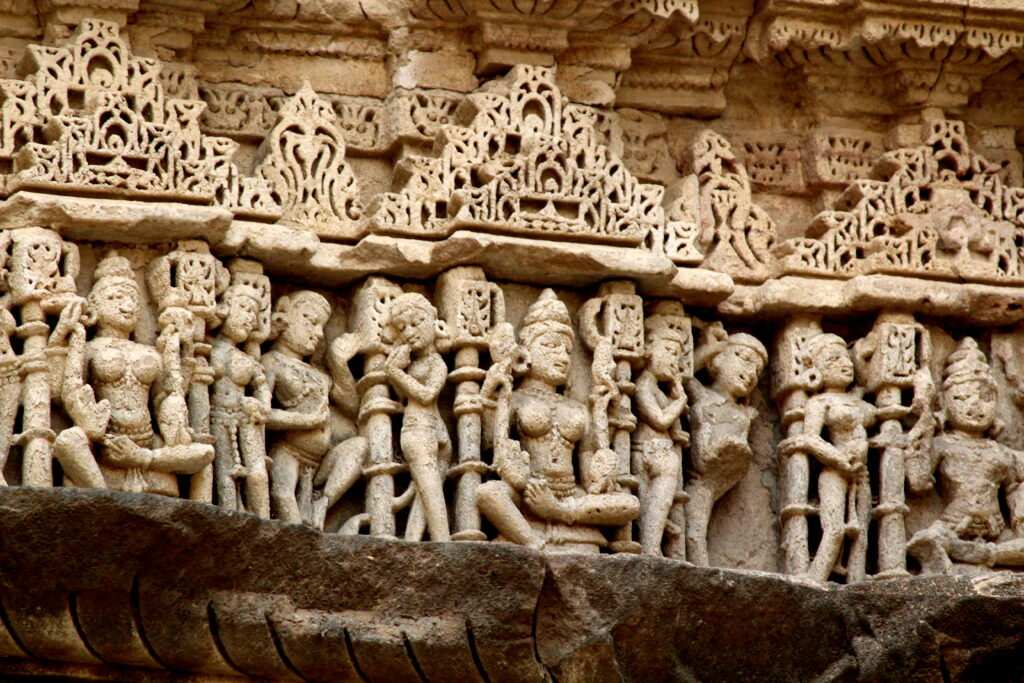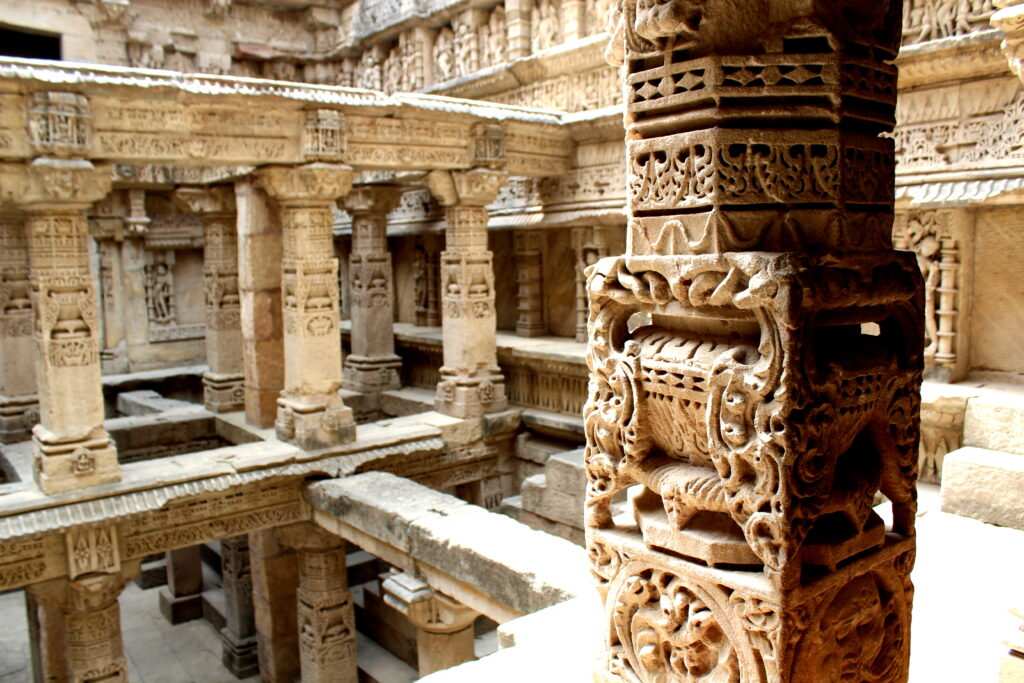Revisiting the heritage city of Patan in Gujarat

Patan, once a fortified city of the Chaulukya (or Solanki) dynasty, is now known as a culture-rich city of Gujarat. Two significant credits are associated with it at the slightest mention of it. First, Patan is a treasure trove of historical and architectural gems, and second, it is home to the Geographical Indication (GI) tagged Patola royal sari weaves, which never cease to impress designers and fashionistas worldwide. Manjulika Pramod discovers more compelling reasons to travel to this warm and welcoming city in northern Gujarat state.

Medieval Era: Anhilpur Patan was the capital of Gujarat’s Chavda and Chaulukya dynasties
In the medieval era, King Vanraj Chavda reacquired his lost kingdom and declared Anhilpur Patan the capital. Later, the town served as the capital of Gujarat for nearly 650 years. Patan grew up as the centre of power for the Solanki dynasty, and the various architectural marvels magnified its character. Several magnificent temples, palaces, and monuments were commissioned in Patan in its heydays. Despite the political variations and wrath of the invaders, Patan never lost its sheen. In fact, with the cultural diversity that seeped in, Patan evolved into a city of traditions and culture with a plethora of attractions.

Rani-ki-Vav (the Queen’s Stepwell) at Patan
This step-well-built as a memorial to a king by his wife is nothing less than remarkable. The seven levels are elaborate artistry, design, and engineering work. Step wells are inverted temple-like structures with a long corridor of steps leading to the water tank. Their sanctity is related to the importance of water in our lives. The states of Gujarat and Rajasthan have many step wells, but Rani-ki-Vav is stupendously beautiful, making it to the coveted list of UNESCO World Heritage Sites in 2014. It is known for its astounding structure, intricate carvings, traditional motifs, effervescent design elements, and archaeological importance. Curiosity and bewilderment pave the way as you begin to stride along its stone steps. The presence of more than five hundred mythological, celestial, and secular imageries on its walls, floors, etc., make it a page straight from the history book. One can only visit till the 6th floor. The accessibility to the tank has been closed due to safety concerns.

Rani-ki-Vav was commissioned by Queen Udayamati 1060 in the loving memory of her husband, Raja Bhimdev I of the Solanki Dynasty. This architectural marvel remained submerged under mud and sand for decades, only to be restored and excavated a few decades ago. Every year, a festival named ‘Rani Ka Vav Festival’ is celebrated here with great pleasure and delight.
GI-tagged Patan Patola weaves
A trip to Patan is complete once you have seen the real deal of its double ikat weaves, one of the finest handmade textiles in India. Patola is also called the ‘Queen of Silks’ and is made from a time-honoured technique. It is regarded as one of the most exquisite and costliest patterns of sarees because of the invaluable time that goes into making it. Only three surviving Salvi families have been protecting the tradition and keeping the art alive with their dedication, passion, and love for the art. The Salvi weavers did not hail from Patan but arrived from Karnataka and Maharashtra around the 12th century.
What makes Patan Patola special? The resist-dyeing process uses the warp and weft technique, abstract designs/ geometric patterns, a vibrant colour palette, and the extreme precision with which it is made. A regular saree takes four months to 1 year to complete.

Even one displaced thread can ruin the whole design because a perfect Patola must look and feel the same on both sides. A trip to the Patola House is a must-have on every itinerary because this is where one will find answers to some of the most relevant questions like, ‘What makes it a traditional art form? What is the making process? Why is it so expensive, and what are the motifs used? Curious travellers may also request a tour to witness the processes involved. Even Rani-ki-Vav has depictions of Patola designs.
Sahastralinga Talav, museums, sarovars, gardens, etc.
History enthusiasts must take advantage of the most extensive artificial reservoir from the Chalukya dynasty. It was commissioned under King Durlabh Raja, thus also called Durlabh Saravor, and was later repaired and renovated by King Siddharaja in the medieval era. Though dry now, Sahastralinga Talav is known for its small shrines on the surface platform and lingas carved on its walls. The water from the Saraswati River would travel to the step well through an inlet channel and then flow around the small temples.


The history buffs must also make the most of the museums there. Prabhas Patan Museum, Patan Patola Heritage Museum, and Patan City Museum will introduce you to the city’s traditions, culture, and crafts. Patan also has many outdoor spaces in the form of sarovars and gardens for picnicking and calming walks.
Hemachandracharya Gyan Mandir and several Jain Temples
Patan was home to many scholars, and with time, it rose to the status of a major pilgrimage centre of Jainism during the Solanki dynasty. History tells us that over 100 stunning Jain temples were built during the medieval era. One of the largest temples is the Panchasara Parshvanath Jain Derasar. Patan is also home to Hemachandracharya, a renowned and great scholar from Gujarat. Gyan Mandir, which takes after his name, contains around 25,000 ancient manuscripts of Sanskrit and Prakrit, acknowledging Patan as the land of scholarship and learning.

In Patan, you must also explore its vibrant streets, narrow lanes, colourful bazaars, and local delicacies.
How do you reach Patan?
Sardar Vallabhbhai Patel Airport, Ahmedabad, is the closest airport to Patan. A road trip from there takes only two hours. If you travel from nearby cities, trains and buses travel to Patan.
Ad





